Whether you're looking to spruce up your yard with landscape lighting or make your home safer at night, choosing the right outdoor lighting can be intimidating. That's why our team at Reliable Heating & Air has created this outdoor lighting guide—to help you choose the best outdoor lights for your home.
In this guide, we'll go over:
Types of outside lights
How to choose outdoor lighting
Want help choosing outdoor lights or landscape lighting? Call Reliable Heating & Air at (770) 594-9969 or schedule an appointment.
Our expert electricians will go over your exterior lighting and landscape lighting options to help you brighten up your yard and give your home an upscale look.
Types of outdoor lights
We'll go over your options for outside lights and landscape lighting.
Ceiling light/Ceiling fan
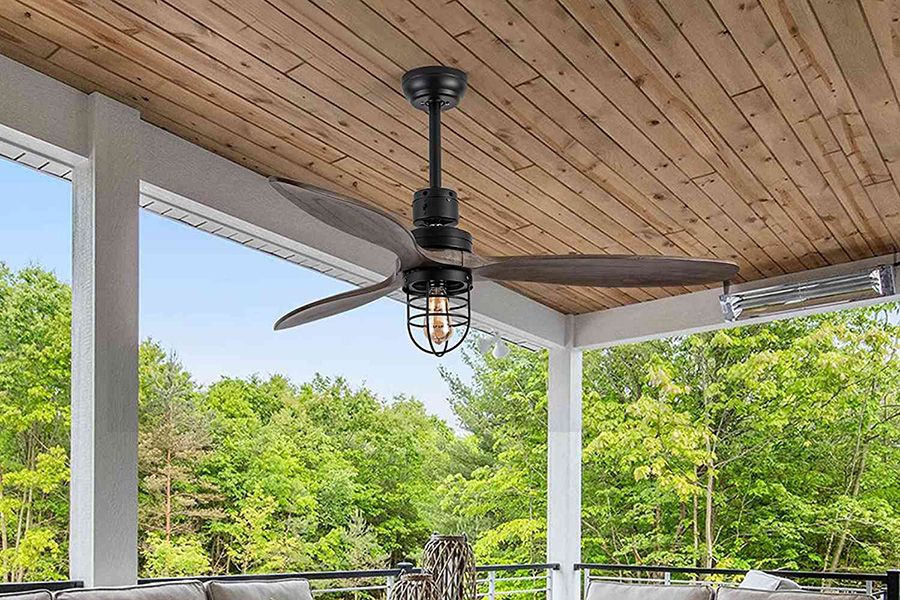
If you're looking to brighten up a covered porch, an outside ceiling light is a great way to do this. Outdoor ceiling lights look much like pendant or flush-mount indoor ceiling lights, except they're more durable to handle the elements. An outdoor ceiling fan is also an option if you need to improve airflow or keep people cool on a deck or patio.
Learn how to keep your outdoor lighting safe from the weather.
Wall light/sconce
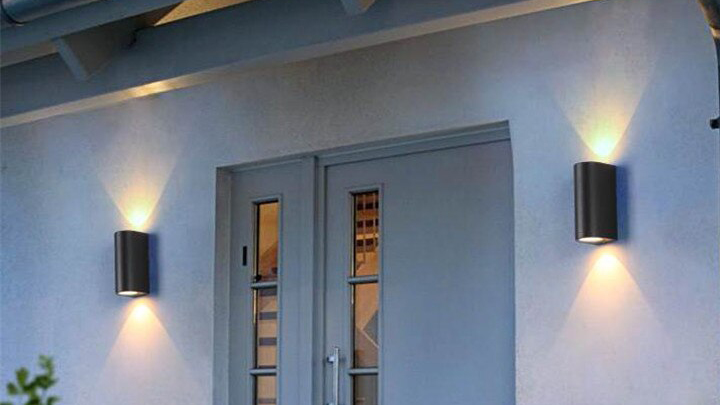
Outdoor wall sconces are a great way to add ambient lighting to your home and give it an upscale look. Many Atlanta homeowners have outdoor wall lights installed on either side of the front door or garage door.
Spotlight
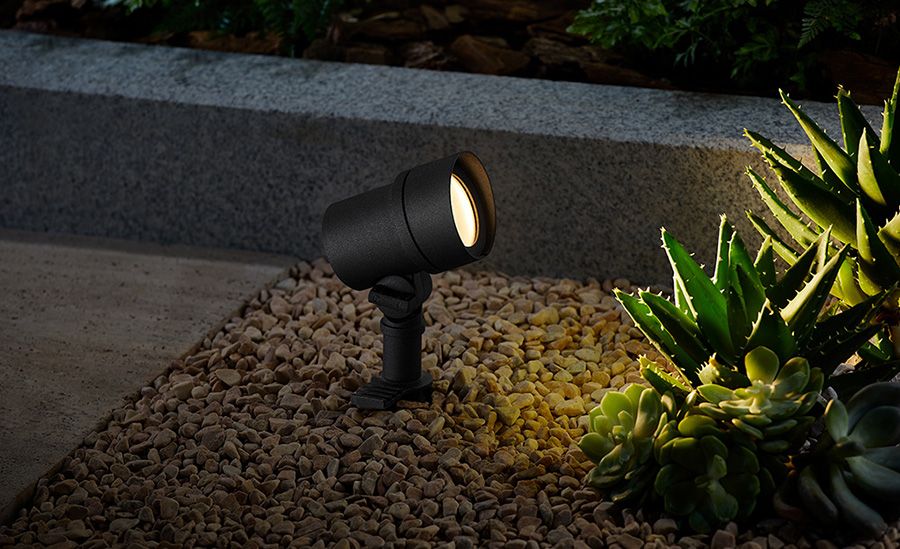
Spotlights, also known as bullet lights, project a bright, narrow beam of light. This makes them good for highlighting specific areas—especially those that you want to brighten for safety reasons.
Floodlight
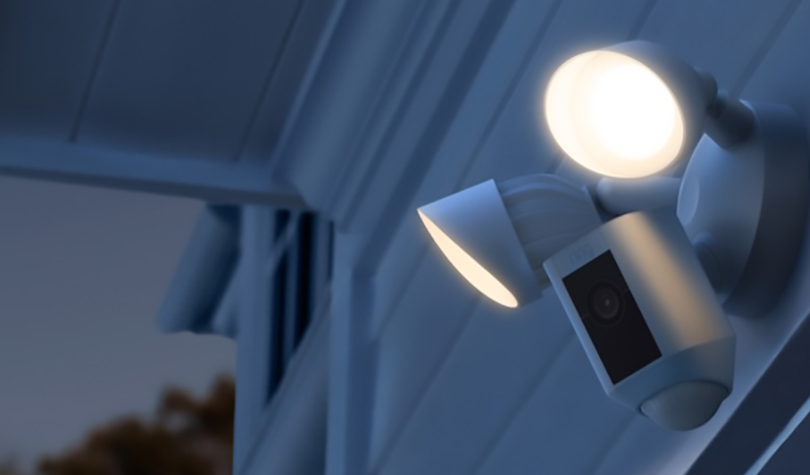
Floodlights are similar to spotlights, except they have a wider beam angle that covers a broader area with a slightly softer light. Floodlights are good for larger areas that you want to brighten up significantly.
Path light
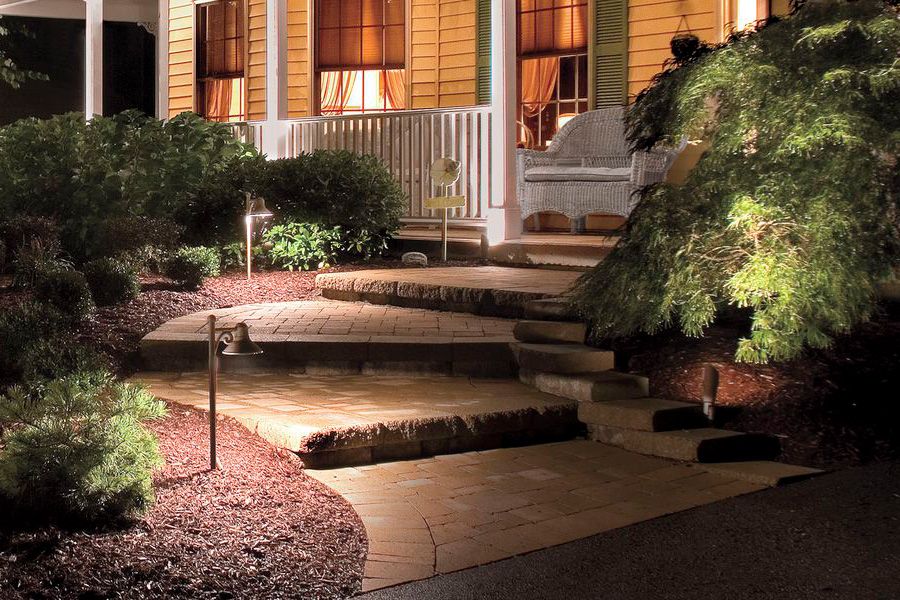
Also called post lights, these lights are posts—usually between 14 and 24 inches tall—that cast a soft orb of light. Path lights are designed to outline walkways, garden beds, and other framed areas of your yard. Path lights come in a variety of styles, but generally have three types:
Traditional: These emit light in all directions, but have little caps or canopies that keep the bulb hidden from above. Traditional path lights work best when you want to illuminate a pathway as well as foliage next to it.
Directional: These act almost like a mini spotlight because they have a head that swivels to emit light in only one direction. Directional path lights work well for reducing glare on glazed surfaces or illuminating a specific space.
Bollard: These are pillars that emit lights in all directions. The light can come from the entire pillar or a small opening at the top of the pillar. You can also find ornate bollard lights that cast decorative shadows onto the space beneath it.
Well light
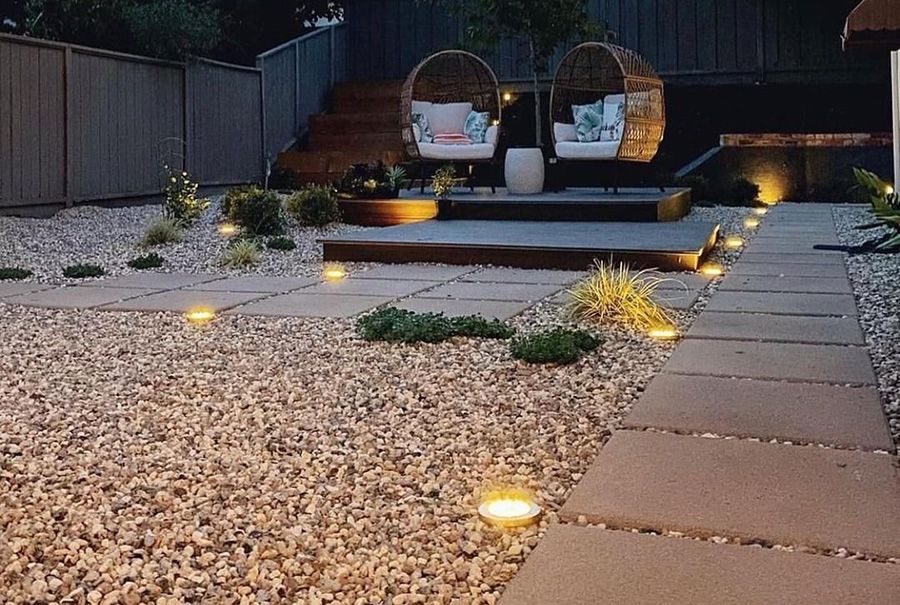
Similar to can lights in a ceiling, well lights (also called inground lights) are installed into a hole so they're flush with the ground. Well lights work best in high-traffic areas, since you can't trip over them, and next to features you want to highlight from below.
Hardscape lights
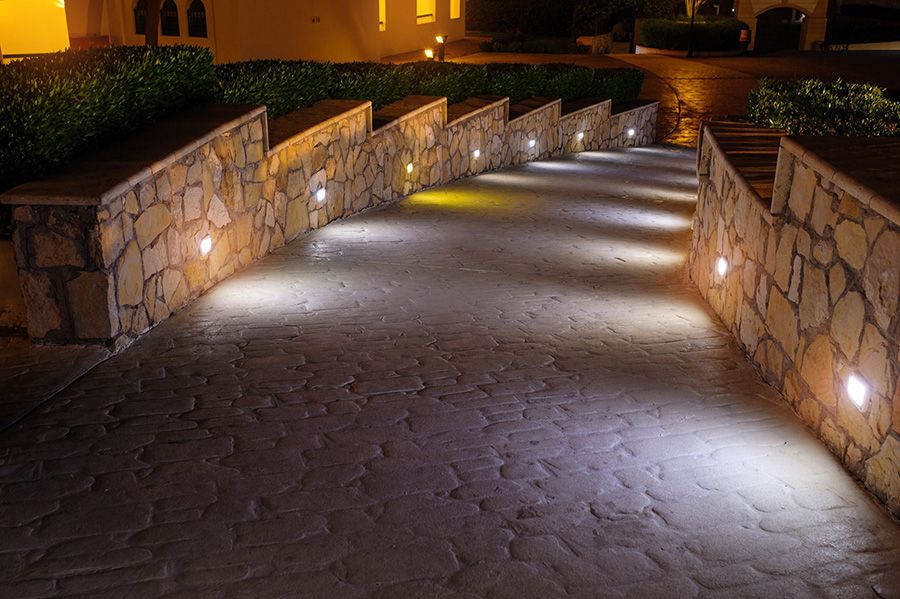
Hardscape lighting fixtures are thin, long fixtures designed to highlight the textures of hardscaping, which consists of the various stone and wood elements that complement your landscaping. They're normally installed at the top of the surface (like underneath a countertop ledge, fence rail or bench seat) to cast light down onto the texture, enhancing the shadows for a more dramatic look.
Deck/Step lights
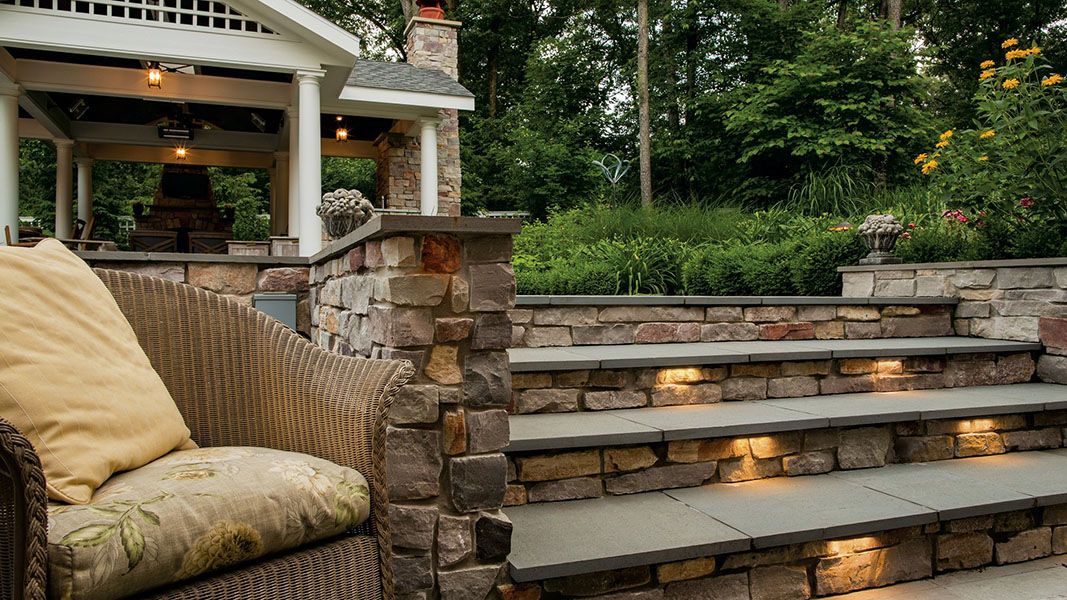
Step lights are installed in stair risers to illuminate stairs leading up to a porch or deck. Deck lights are helpful for safety reasons, but also add ambience by highlighting the grain of the stair material.
How to choose outdoor lighting
When choosing exterior lighting for your home and yard, think about:
Features you want to highlight
The light bulb type (LED or halogen)
Additional outdoor lighting options
Focus on features to highlight
Similar to indoor lighting, the type of outdoor lighting you should get primarily depends on what you want the lighting to achieve.
Some common landscape lighting techniques include:
Uplighting: This technique is achieved by installing lights in the ground so they cast light up onto a feature to draw attention to it. Uplighting is most commonly used on trees and house facades.
Downlighting: The opposite of uplighting, downlighting involves casting light down onto features or foliage. One type of downlighting is moonlighting, which casts light down onto features (normally trees or shrubs) to mimic the soft light of the moon.
Grazing: This is when light is installed parallel to a textured surface to emphasize the surface's character. Grazing is great for yards with a lot of stone or wood hardscaping (sitting or retaining walls, fire pits, water features, etc.).
Shadowing: This technique involves lighting an object from the front to project its shadow on a surface behind it. Shadowing works well for trees and shrubs planted in front of a wall or fence.
Silhouetting: The opposite of shadowing, silhouetting (also called backlighting) is when you place the light behind the feature or plant to want to accentuate to make it more interesting.
You can find the best outdoor and landscape lighting for what you want to achieve in the table below.
If you want to… |
Choose this outside light |
Add light to a porch or patio |
|
Brighten up a dark area for safety reasons |
|
Frame a walkway or garden bed |
|
Highlight a textured space |
|
Make features or plants more dramatic |
|
Choose a light bulb type
You have two options for the type of bulb used in your indoor lighting fixtures:
Halogen: Outdoor halogen lights use a filament housed in a small tube of halogen gas. Halogen bulbs give off a bright, white light, which makes them good for safety lights like spotlights and floodlights.
Light-emitting diode (LED): LED lighting uses a microchip that illuminates tiny lights inside the bulb. Outdoor LED lights will cost more, but use around 80% less energy than outdoor halogen lights and lasts almost 25 times longer. Outdoor LED lighting works well for areas where you want a soft, warm light, but you can also find LED safety lights.
Additional outdoor lighting options
Once you have an idea of what outdoor lights you want to go with, you can choose from additional features like:
Solar landscape lighting: Save money on your electric bill with landscape lighting that has a panel to store solar power and use it when the lights come on at dusk. You can easily find solar spotlights, floodlights and path lights, but you can also find other solar-powered outdoor lights.
Motion sensors: For added security, you can choose spotlights and floodlights that turn on when they detect movement.
Smart lighting: With smart lighting, you can control the lights and set schedules from your smartphone. Some models also let you sync other smart devices like cameras for even more convenience and security.
Want help brightening up your yard? Call Reliable Heating & Air.
Call Reliable Heating & Air at (770) 594-9969 or schedule an appointment for a free in-home estimate.
We've been offering the most reliable exterior lighting installations to our Atlanta customers since 1978. Our electricians will talk with you about your vision for outdoor and landscape lighting, then give you the best recommendations based on your style, preferences and budget.
View landscape lighting details

